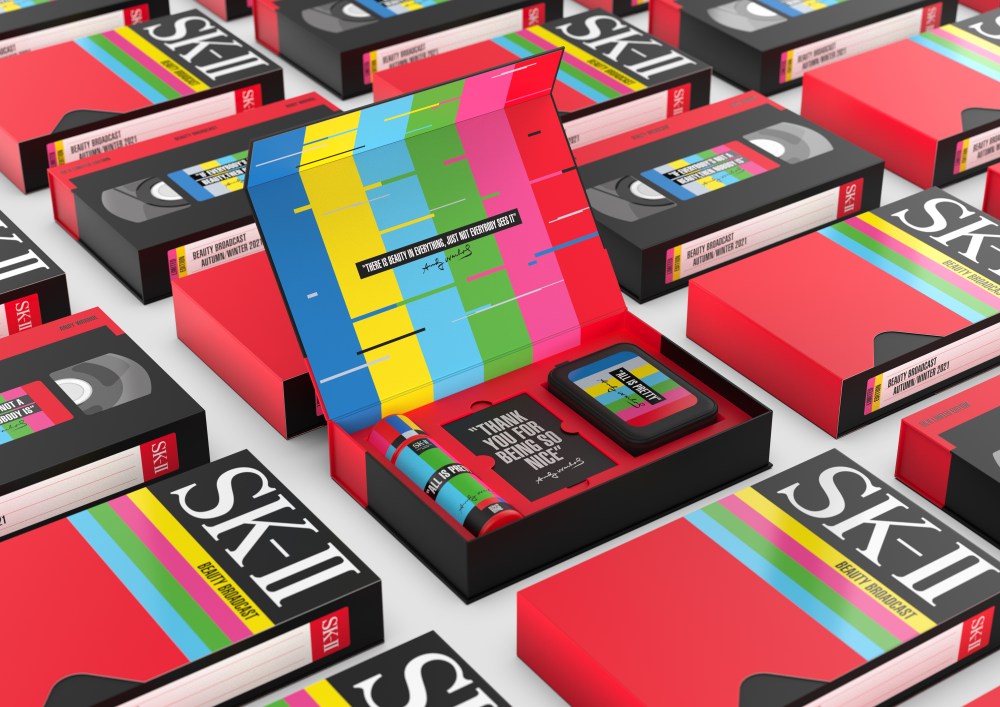The industry perspective is by Gauthier Boche, VP Global Head of Strategy at Marks.
We’re riding a wild wave in the content universe. Algorithms and AI have teamed up across our digital landscape, cranking out (and amplifying) mediocre content faster than a TikTok trend goes viral. Brands jumped into the content factory, and somehow, we’ve hit this bizarre tipping point. The internet —once our playground for fresh ideas and cultural bangers — has taken a turn into something a bit more sketchy. The revolution in digital expression has morphed into an endless stream of AI-generated posts, cookie-cutter influencer content, and algorithmic recommendations that keep us scrolling but never satisfied.
Oxford Dictionary wasn’t playing when they crowned “brain rot” as 2024’s word of the year. It’s the perfect label for what happens when we overdose on empty content calories. Most of what’s floating around online these days is designed to hook us like a Netflix series but without any of the satisfying long-term engagement. We’re caught in a loop of consuming content more about triggering dopamine hits than creating lasting value or genuine connections. The metrics-driven approach to content creation has led to a landscape where quantity trumps quality, and authenticity takes a backseat to algorithmic optimization.
But here’s where it gets interesting – these same brands pushing digital junk food hold the key to something better. They could break free from the algorithm and remix how culture and commerce vibe together. The opportunity lies in recognizing that true engagement doesn’t come from gaming the system but from creating moments that actually matter to people.
Throwback Moves, Future Mindset
Some luxury brands are already catching this wave. Miu Miu dropped literary pop-ups, spreading books like confetti. Le Bon Marché turned their Left Bank store into a book lover’s paradise, while Saint Laurent went all in with their Babylone bookstore in Paris. Saint Laurent even launched a film production house in 2023, the first luxury brand to make that power move. These brands get it: People crave a chance to slow down in our high-speed visual world. It’s not just about selling products anymore; it’s about creating spaces where people can breathe, think, and connect with something real.
This shift pushes marketing crews to level up by creating authentic content instead of just feeding the robot overlords. Picture guerrilla marketing with a 2025 twist, like tech brands transforming city spaces with mind-bending street art and AR that stops thumbs from scrolling. Like Samsung’s “Space Selfie” mission that launched phones into the stratosphere or this year’s “Share a Coke” campaign, encouraging IRL meet ups. These aren’t just stunts; they’re moments that break through the digital noise and give people something to remember.
Even the influencer scene is evolving. Instead of chasing likes, brands are connecting with people who actually shape culture. Consider Jameson bringing global artists together for “Distilled Sounds” or SK-II dropping limited editions with culture heavy-hitters who bring real heritage to the table. The focus shifts from follower counts to cultural impact, from quick hits to lasting impressions.
SK-II’s technicolor Andy Warhol edition, by LOVE.
Gaming the Algorithm
But stepping back from screens doesn’t mean we can’t use the system to shake things up. What if brands activated digital experiences that snapped people out of their scroll coma? The secret sauce? Brands that are genuinely plugged into culture, not just surfing whatever’s trending. Imagine digital campaigns leading people to real-world discoveries or social media posts encouraging meaningful offline interactions.
Look at Nike. They’ve always kept it real, focusing on actual experiences over digital noise. Their “Dream Crazy” campaign wasn’t just about viral moments; it was about inspiring real change and action. Or McDonald’s recent WcDonald’s anime play, turning fan passion into a whole vibe that people could taste and feel. These brands understand that the best digital strategies don’t end in the digital world—they bridge the gap between online and offline experiences.
The New Blueprint
What if we flipped the script on “brain rot” and saw it as our wake-up call? It’s time for brands to reclaim their role as cultural curators who add value to the mix. Who better to sheriff the digital Wild West than creatives who care about quality and making stuff that matters? It’s about creating content that doesn’t just fill feeds but fulfills people.
Let’s trade mindless content for moments that hit differently. After all, the best disruption isn’t just noise; it’s the stuff that makes people pause, think, and maybe even crack a smile. That’s the kind of content revolution we should be talking about. It’s time to move beyond the metrics and measure success by the meaningful connections we create and the genuine value we add to people’s lives.
We need brands to step up and show that they can be more than content factories. They can be cultural catalysts, community builders, and creators of experiences that enrich our lives. The future of digital content isn’t about more—it’s about better. Better stories, better experiences, better connections.
The content revolution is calling, and it’s time to answer with something better.
Gauthier Boche is VP Global Head of Strategy at creative platform Marks. At Marks, he guides teams to deliver brand experiences and cultural strategies for clients including Cadbury, Diageo, Amazon and LEGO.
Header image (rotated): Everywhere Eyeballs Aflame, 1888 by Odilon Redon, Rijksmuseum, sourced from the Public Domain Archive.
The post Could Brands Be the Unlikely Antidote to the Era of Brain Rot? appeared first on PRINT Magazine.

